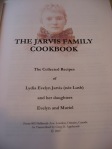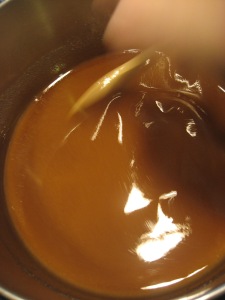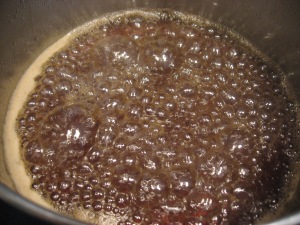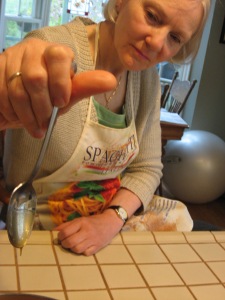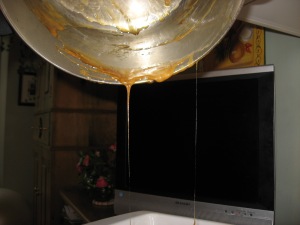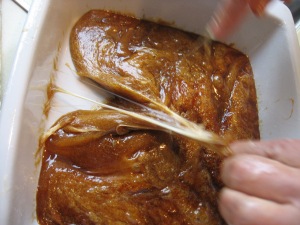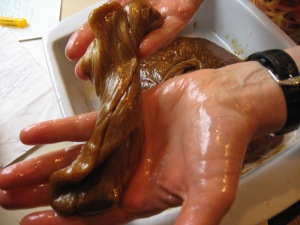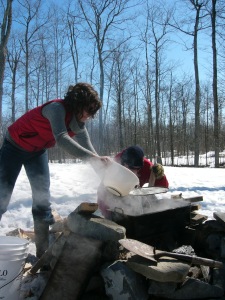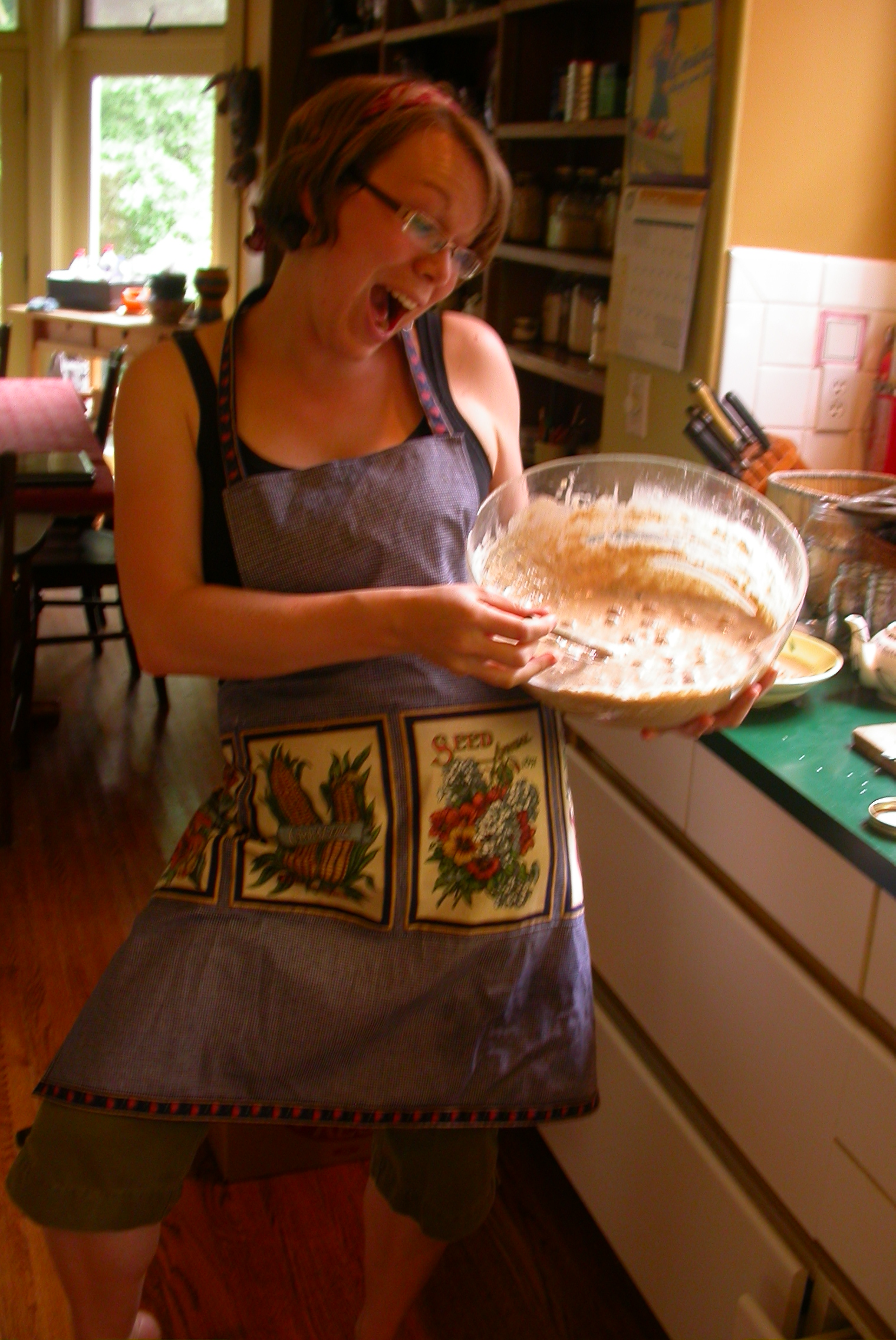I’m on vacation.
Yup, that’s right. For the next two glorious weeks, I am practicing dolce far niente on the west coast, including a few lovely days in Vancouver with my parents, and a little roadtrip down the Oregon & California coasts with my amigo B.
Before leaving, it occured to me that I didn’t factor vacations in to 52 Projects. Given that I’m already behind (with 12 projects to finish in the next 7 weeks if I’m to keep strictly to timelines – an unlikely prospect), I began brainstorming what I could take on the road.
As I scanned the list of remaining project ideas, one immediately popped out – make a recipe by your great-grandmother! What better project to take on under the supervision of my own mom – cook and DIY-er extraordinaire!
My mom, naturally, was totally on board with the idea. Her side of the family includes some
incredible family historians, providing easy access to such recipes. In fact, a few years back my Uncle Dave and Cousin Greg transcribed my great-grandmother’s recipes and self-published them as a gigantic recipe / history book.
I’ve spent a good chunk of the last few days here in Vancouver pouring over this book, marveling in the culinary changes that have taken place since my great-granny, Lydia Lush, was working away in the kitchen. I’ve laughed disgustingly at the pages of “jellied” recipes – Jellied Sandwiches, Jellied Salads, even Jellied Campbell’s soup (the only ingredients are Campbell’s soup and a package of lemon jelly powder … yikes!). I’ve poured over the chapter on “Domestic Science”, taking careful notes on how to preserve cheese, solder metal at home, remove grease spots, and properly dish up a plum pudding.
But of most interest to me are the hints of community and history found scattered across the pages. In an age where I google any recipe I want, Lydia carefully wrote each one out by hand, including notes about neighbours, social events,
and new products — Mrs Harley’s Filling for Maple Tarts (Much Liked!), Mrs Edmunds’ Marmalade, various cookie recipes from Mrs Mat, Miss Lyner, Aunt Annie, Mrs Murch and more; the emergence of products like Heinz Ketchup (1876)and Rice Krispies (1928); the inclusion of war-time & depression era recipes, that minimize the use of ingredients like milk and eggs. It really is an incredible read.
After much contemplation, this morning my mom and I decided to make pull-taffy. Alongside the notes in the book, my mom shared her own memories of making this with her own mother — and how handling the taffy helped her develop “Jarvis Fingers” (ones with so few nerves left in them that handling near-boiling taffy isn’t a problem. I do NOT have Jarvis fingers, though may have started developing them today!).
In any case, on a dreary Monday morning, this was the perfect project to work away on. For anyone looking for a sweet pick-me-up, I highly recommend trying the following…
Materials
- 3 cups brown sugar
- 1/2 cup white vinegar
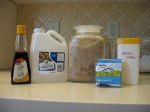
- 1/2 cup water
- 3 tsp butter
- 1/2 tsp baking soda
- vanilla
- big pot
- wooden & metal spoons
- waxed paper
- a big tin or glass/ceramic dish
- extra butter for greasing the above big tin or glass/ceramic dish
How to do it!
- Before you start anything, grease your final tin/pan really well. Give it lots of butter. This will make a big difference later.
- Put the sugar, vinegar and water in the pot and stir well.
Put this mixture on the stove on high heat and bring to a rolling boil.
Once the mixture is on the stove, DO NOT stir anymore. Just watch it & make sure it doesn’t burn. Once it’s on the boil, you want to keep it rolling but may want to turn it down to medium heat.
Let it boil for about 10 minutes, and watch the transformation take place.
- Once it’s boiled for 10 minutes, add 3 tsp butter. Again, DO NOT stir, just let it do it’s thing.
Let it keep boiling until it hairs. This may take a while. To test for “hairing”, dip a metal spoon in the mixture and lift out.
If the taffy drips off the spoon, it’s not ready. But if it starts making hair-like strings, you’re set!
- Just before removing from the stove (or fire, as Lydia Lush writes), add your baking soda (which should be dissolved in a wee bit of hot water) and vanilla. This time, you can stir, but just a little.
- Pour the taffy into a buttered tin. You’ll see lots of evidence of the hairing here.

- This is the fun / painful part. The taffy will start to cool faster around the edges of your well-greased pan than in the middle, and ideally you want it to cool uniformly. So, you need to get the cooler taffy into the middle by pulling it. Now, while this sounds straightforward, you’re basically having to put your fingers in ridiculously hot, sticky liquid. If you don’t have my mom’s Jarvis fingers, this is really painful. One way to help with this is to grease your hands up so the taffy won’t stick to your fingers as much. Please, please, please be careful with this part.
- Keep on lightly pulling the taffy to the centre until it is cool enough that you can hold a ball of taffy in your hands. You’ll likely want to re-grease your hands several times throughout.
- Now comes the real pulling. Work your taffy by pulling and twisting it over and over again, and feel the consistency change as the taffy cools and hardens. It will also change colour. Once your taffy is a golden straw-like colour, and fairly firm, you’re done.
- Lay out some waxed paper, and pull the taffy into long snake-like shapes, and twist it up.
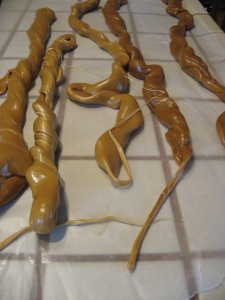
- Let it sit until it’s hard like brittle candy, and then smash it up (using the back of a knife or just pure force!) into bite-size pieces.
- Enjoy – and don’t forget to brush your teeth after consuming!!!
